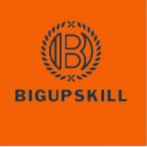
Supplier Relationship Management: Connect with 1M Businesses
Supplier Relationship Management (SRM) is a critical strategic technique that helps businesses optimize their interactions and relationships with suppliers. In today’s worldwide corporate climate, engaging with a varied network of suppliers from around the world. The world is critical for acquiring quality products, fostering innovation, and achieving a competitive advantage. This thorough guide, I will give you actionable insights. A tactics to successfully connect with 1M Businesses Worldwide via Supplier Relationship Management.
Supplier Relationship Management (SRM)
Supplier Relationship Management refers to the systematic approach and practices used by organizations to manage and nurture relationships with suppliers. It involves strategic sourcing, relationship development, performance measurement, risk management. And contract management to create value, optimize costs, and drive innovation through enhanced supplier partnerships.

Understanding the Importance of SRM in a Globalized World
In a globalized business environment, connecting with a vast network of suppliers worldwide is crucial for organizations to:
- Access Quality Products and Services: Tap into diverse markets and suppliers to source high-quality products and services at competitive prices.
- Drive Innovation: Collaborate with global suppliers to access new technologies, ideas, and market opportunities, fostering innovation and differentiation.
- Optimize Costs: Leverage global sourcing strategies to negotiate better terms, improve efficiency, and reduce costs in the supply chain.
- Mitigate Risks: Diversify and manage supplier relationships to identify, assess, and mitigate potential risks associated with global sourcing and supply chain disruptions.
Key Components of Effective SRM
Here are the key components of Effective SRM:
Strategic sourcing
involves identifying, evaluating, and selecting suppliers based on quality, reliability, cost, capability, and strategic fit in line with business goals.
Relationship Development:
Encourage open communication, mutual trust, and collaboration to develop strong, long-term relationships with suppliers, allowing for shared problem-solving, innovation, and value generation.
Implement performance measuring and monitoring systems:
To evaluate supplier performance against set metrics and KPIs, enabling continuous improvement and informed decision-making.
Risk Management:
Proactively identify, assess, and mitigate potential risks associated with supplier relationships through risk assessment, contingency planning, and collaborative risk management practices.
Contract Management:
Implement effective contract management processes and tools to negotiate, implement, and enforce supplier agreements, ensuring clarity, transparency, and compliance with terms and conditions.
Strategies to Connect with 1M Worldwide Businesses
These are the Strategies that will connect your business with 1 M Worldwide SRM.
Global Supplier Discovery:
Utilize online platforms, marketplaces, and industry networks to identify and connect with potential suppliers worldwide, expanding your supplier network and sourcing options.
Supplier Onboarding and Engagement:
Develop standardized onboarding processes and engagement strategies to streamline the integration of new suppliers into your supply chain and foster collaborative relationships.
Cultural Understanding and Adaptation:
Understand and respect cultural differences, business practices, and regulations in different regions and countries to build trust, facilitate communication, and ensure compliance in global supplier relationships.
Technology and Digitalization:
To automate and optimize SRM operations, improve visibility, transparency, and supplier collaboration, and enable real-time communication and data exchange, make use of technology, digital platforms, and SRM software solutions.
Strategic Alliances & Partnerships:
Find important suppliers and global industry leaders, then form strategic alliances and collaborations with them to make use of their knowledge, skills, and market insights to gain a competitive edge and promote mutual progress.
Best Practices for Implementing SRM
These are the best practices for Implementing SRM.
Define Clear Objectives and Goals:
Establish clear objectives, goals, and KPIs for SRM initiatives to align with organizational priorities, measure success, and drive continuous improvement.
Invest in Training and Development:
Provide training and development opportunities for procurement and supply chain teams to enhance their skills, knowledge, and capabilities in SRM practices, global sourcing strategies, and cross-cultural communication.
Monitor, Measure, and Analyze Performance:
Put strong monitoring, measurement, and analytics in place to keep tabs on the results, performance, and influence of SRM activities. Use data-driven insights to inform choices, optimize processes, and create value.
Encourage a Culture of Cooperation and Ongoing Development:
Promote a collaborative, transparent, trusting, and ever-improving culture. Both inside your company and among your suppliers to enable cooperative problem-solving, creative thinking, and value generation in international supplier relationships.
Conclusion and Next Steps
A systematic method known as SRM helps businesses to efficiently manage their relationships and interactions with suppliers across the globe. In today’s globalized business environment, organizations can successfully connect with 1 Million Businesses Worldwide via Supplier Relationship Management. When Understanding the significance of Supply Relationship management (SRM). Putting key components and strategies into practice, adopting best practices, and fostering a culture of collaboration and continuous improvement.
Next Steps:
- Assess Your present SRM Practices: Determine your strengths, shortcomings, and opportunities for improvement by evaluating your present SRM practices, procedures, and capabilities.
- Create and Implement a complete SRM plan: Using the essential elements, tactics, and best practices described in this guide, create a complete SRM plan that complements your organization’s goals and objectives.
- Engage and Collaborate with Suppliers: Engage and collaborate with suppliers, industry networks, and SRM software providers to facilitate the implementation of your SRM strategy, streamline processes, and optimize supplier relationships.
- Track, Evaluate, and Enhance Performance: Keep an eye on the effectiveness, results, and effects of your SRM activities at all times. Use data-driven insights to inform choices, optimize processes, and create value.
You can effectively connect with 1M businesses worldwide, optimize your supplier relationships, and achieve sustainable growth and competitive advantage in today’s globalized business landscape by adhering to this comprehensive guide and taking proactive steps to enhance your Supplier Relationship Management capabilities.






